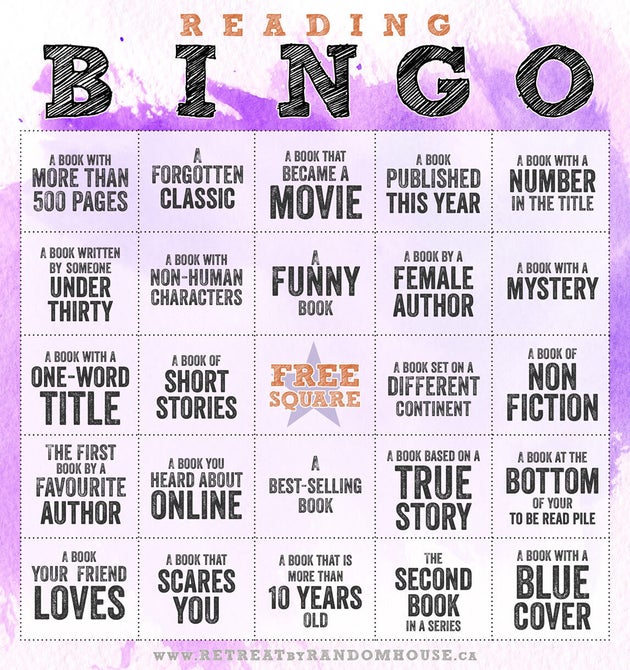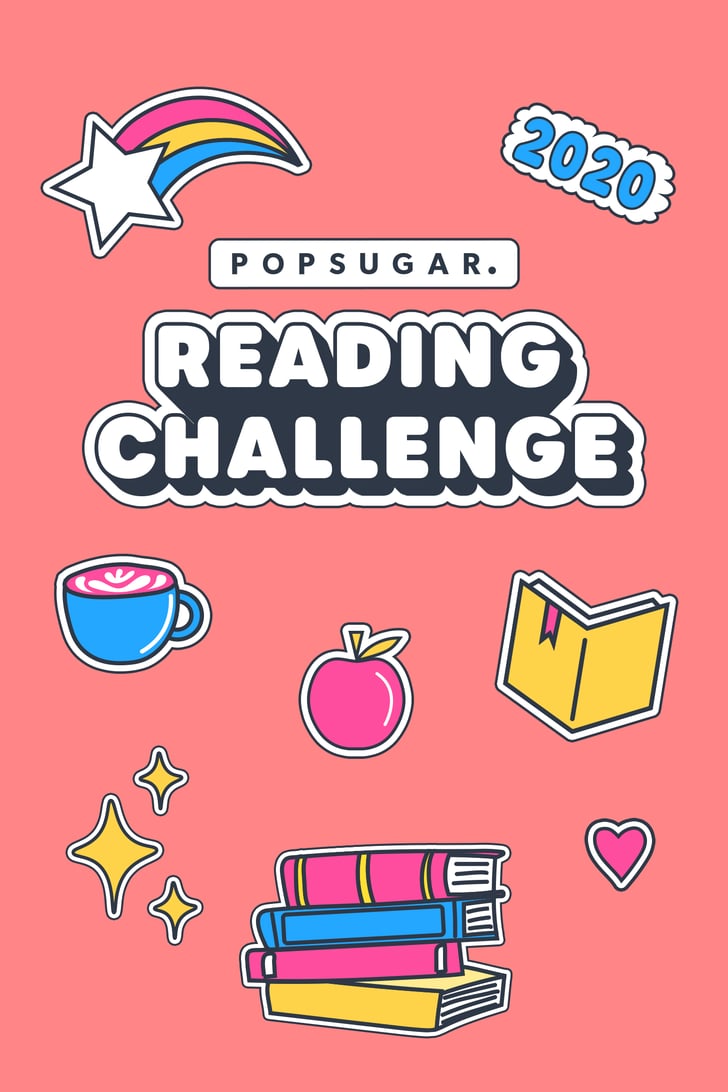
One of the ways people work around this battle for productivity is to set themselves a reading challenge. If you’ve never heard of one, they come in a few forms. The most well-known—and possibly the one that popularized the very concept—is the Goodreads Reading Challenge, which asks users to set themselves a target number of books they’d like to read. The 2020 challenge is currently sitting at an average pledge of 44 books read in a year, working out to about 3 and a half books a month. I think most busy adults would balk at this number, but keep in mind that this average is being thrown off by ambitious teens. A more sensible number like 20 books a year, or 12 books a year, or even 5 books a year is just as valid to Goodreads! The great thing about this challenge is that it is super easy to keep track of; Goodreads allows you to catalogue your “Read” and “Want to Read” shelves, as well as offering an endless number of personalized shelves. In short, it’s fun. It is, however, public.
For the even more ambitious, the internet is full of reading challenges that present in the form of monthly guided lists or bingo cards, with challenges like “read a book by a woman of colour” and “read a book more than 100 years old”. These are more personal challenges, in that nobody is necessarily watching you work your way through them. They can be quite helpful if you’re stuck for something to read and need quick inspiration. But sticking to them religiously can be stifling.

© Huffington Post and Random House
Whether you find a reading challenge to be helpful or off-putting entirely depends on what you find motivating. Setting yourself goals is never a bad idea, but how well do you personally respond to pressure? A survey by The Atlantic found that while some people do indeed find a numerical challenge helpful—especially “numbers people” like accountants and what have you—plenty of others find it demotivating. There’s a psychological factor of seeing a number glaring at you, telling you you’re a failure. Goodreads also has an unfortunate tendency to throw this perceived failure back in your face, sending you messages reminding you that you’re behind in your goal. I can’t imagine anyone being told repeatedly that they’re behind in a task without it manifesting into yet another anxiety! The important thing to remember about reading challenges—even the domineering Goodreads one—is that they should be fun. You’re doing this for your own enjoyment, after all! Let’s not turn it into homework. And of course, keep in mind that just because people are pledging certain numbers of books to read, they’re not necessarily achieving that number. In most cases, it’s not even close. According to The Atlantic, only 16% of Goodreads participants completed their challenges in 2018, with only 21% of the cumulative pledge being reached. So, if you’re failing to reach your goal, you’re in good company. The mark of a successful reading challenge doesn’t have to be hitting that final number; as long as you’re reading—and enjoying it—you should count yourself successful.
If you really do want to strive for a higher book count this year, it doesn’t have to be some arduous undertaking. A simple way to read more, numerically? Diversify what you count as “reading”! Plenty of library staff populate their “Read” lists with picture books, graphic novels, YA novels, and poetry. These all absolutely count toward reading challenges! In fact, if you’re basing your challenge off a list of prompts, these various formats are an excellent way to start checking some boxes. And a little time-saving advice: if you don’t like what you’re reading, put it down. Pick up something else, and keep picking up something else until it sticks! It might be blasphemous to some completists, but putting down something you’re not enjoying is just fine. Life is too short to struggle through a book you’re not connecting with, when you’ve no doubt got plenty of others in your TBR pile just waiting for a chance.
Finally, don’t rule out the option of reading more than one thing at a time. It sounds like a bit of a headache, but if you’re reading a serious novel and you’re not always in the mood for it, go ahead and pick up something lighter in the meantime. There are no rules on how to read! I tend to have classics on the go in the background, since I don’t always feel like I can commit to them fully. I read James Baldwin’s Another Country over the course of six months, not because I didn’t love it (I did), but because it was my “insomnia book”–the book that kept me company on those nights I couldn’t sleep. I read plenty of others in the daytime hours, but I loved having that one to go back to at night. I’ve done the same with The Age of Innocence, which I am currently still working through in small installments. Basically what I’m saying is, make your reading habits whatever works for you. Everyone is different, and working off someone else’s model might make you feel sub-par. So do whatever you want!
What are you reading now? If you’re participating in a reading challenge this year, let me know which one! And if you have any personal tips on how to increase your reading, feel free to share them as well. Happy reading, everyone!

I didn’t realize Goodreads sent you guilt-tripping reminders that you’re falling short of your reading-actualized self! Though I can’t tell you the number of times I’ve had to stuff my Goodreads full of picture books to make sure that I’m on track for completing my goal for the year – I feel a bit called out :p Not that there’s anything wrong with putting JP titles onto my Goodreads “read” shelf – it just feels like I’m cheating the system somehow? I’ve been trying (and continue to try) to readjust this internalization of the relative unimportance of picture books in the hierarchy of written text and see them as just as valid – because they are! – as, for example, the Classics. On the whole, because reading sometimes feels a bit like working (because if it’s good should I be reviewing it and if I do what should I be focusing on?? And if it wasn’t interesting enough to work at from any angle I want to pursue, is it worth spending time on the book if I can’t produce writing about it? Back to the Always Be Optimizing Tolentino essay. And this is even though most of the reading I do is in my own time!), I’ve actually set a much lower goal for myself than usual on Goodreads this year in the hopes that I won’t just be adding more stress to my reading practices.
And yes! I’ve been putting this into practice as of late as well, the “just give up if I don’t like the book” approach. If a title’s a drag and I’m not even halfway through, I put it in my “I give up” shelf. Maybe I’m just not in the mood for that type of book at that time, but whatever the case may be, I can return to it anytime – but the time I spend slogging through it can’t be returned.
The bingo card seems like a really fun way to read around and explore books in different genres and by different authors you might not have run into going just by suggestions and recommendations based on what you already like! Are you doing any reading challenges or setting a numerical goal for yourself this year?
” this internalization of the relative unimportance of picture books in the hierarchy of written text” — what a perfect way to phrase this! I think we feel like we’re “cheating” on our reading challenges when we bump it up with picture books because it doesn’t feel like “real” reading, whatever that means! Because sure, they don’t take nearly as much time to read as a whole novel, but how do we quantify what counts as reading? A certain number of pages? How much we struggled reading it?? There’s no answer! So once we let go of these internalizations (at least a little–I’d be lying if I said I don’t still have them) we can open ourselves up to all different types of reading.
As for myself, I think I’m going to do a low-key Goodreads challenge this year. Like, I’m not going to stress over it but I do want to keep track, just as a means of holding myself accountable so I don’t just default to Netflix/Internet like I usually do!
What a great post! I have also adopted the “just give it up” approach to some books—life is short and there are way too many books that are stunningly beautiful, moving, hilarious, incredible, or just downright good to waste too much time on any that don’t strike the reader as such (unless they have to be read for some specific purpose, I suppose). There are more than any one person could ever read in a lifetime. I once got 80% through a book before I came to this realization.
In one of my undergrad courses, we were tasked with reading one novel per week. On the first day of the class, predicting this might cause some anxiety among the students, the instructor had us pull out a blank sheet of paper and asked us to write (in minutes) the time that we spent per day watching television, browsing the internet, checking social media, and other things. He asked us to tally it up to see how much time we could reclaim for reading if we really wanted to. I had my doubts, with a full course load, but it turns out it WAS possible to get through all those books (for the most part) in time for the lectures. I never forgot that first day, though, and the idea that there is so much ‘found time’ in our lives, if we just know where to look. I think this is less true for some than others (what if you don’t watch that much Netflix to begin with? or don’t even have Facebook?), but I liked the idea that there are secret pockets of time to be reclaimed with the right amount of shifting.